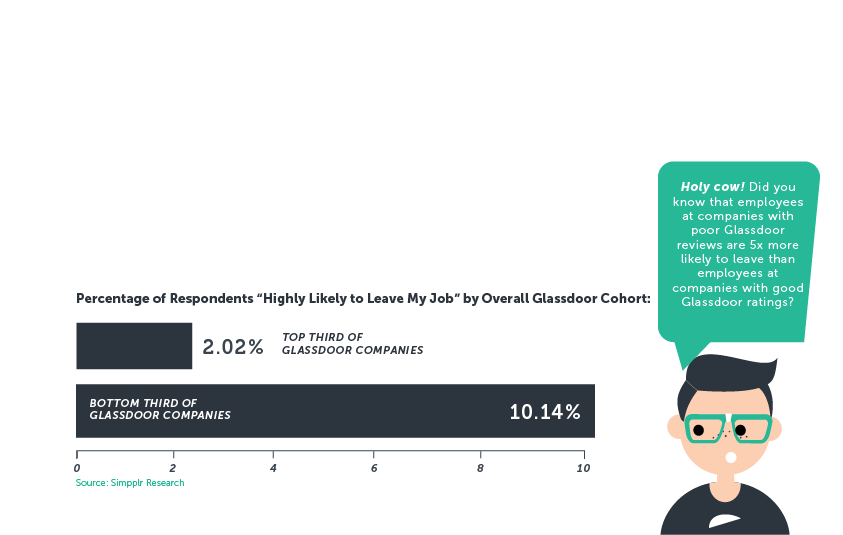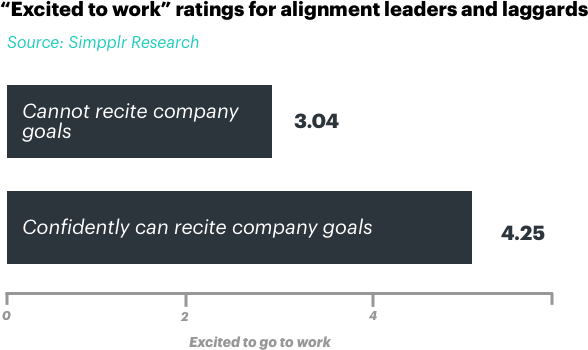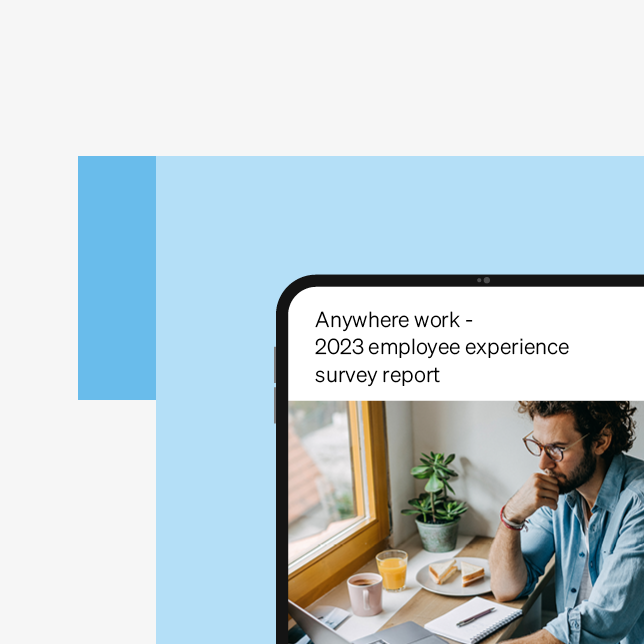In one of our most exciting research engagements yet, we recently scoured Glassdoor data across the Wilshire 5000 and surveyed employees from thousands of companies across a comparable sample to see if employee engagement really does matter, whether it affects Glassdoor reviews, and how likely companies with poor culture and low employee engagement are to churn employees.
Why does an intranet software vendor care? Simpplr’s biggest competitor is complacency (i.e. company’s don’t feel a sense of urgency to update their internal communications software).
Bottom-line: The findings are real and compelling!
These findings show a critical linkage to investing in internal communications and are precisely the type of approach organizations should use when lobbying executives to become more vested in ongoing internal communications and tracking employee engagement.
Here are a few employee engagement research highlights:
Employee Experience is the New Brand
Glassdoor data matters because we currently have record low unemployment. According to the Conference Board’s annual survey, one of CEOs’ biggest priorities remains focused are around retaining and attracting talent. Our survey proved that employees of the poorest rated Glassdoor companies are 5 times more likely to leave than employees of highly rated companies.

The Glassdoor research statistically validated that company scores are mainly driven by culture and perception of senior management. So we supplemented this study with an additional survey to statistically see what are the key drivers of engagement and culture.
What are the key drivers of employee engagement?
By running regressions on an engagement outcome variable, we were able to see what attributes are most important for employee engagement. At a high-level the findings show that internally marketing the company’s higher purpose, establishing a strong sense of community, and aligning on strategic priorities are all key drivers of employee engagement and retention. These factors mattered more than autonomy, development, manager appreciation, pay, benefits and many other attributes.
Aligning on strategic priorities and employees understanding their contribution is an employee engagement secret people don’t appreciate
Even employees don’t understand how important these attributes are. For example, they didn’t seem to care about their ability to understand and recite corporate initiatives as an impact variable on their engagement. But when we separated those who could recite corporate goals from those that can’t, we saw a strong variance between engagement levels. This is important because a lot of recent research (like this MIT study) shows that organizations struggle with this alignment.

Suddenly, taken within this more strategic context we start to appreciate how the internal communications function deserves to be elevated to become a more strategic employee engagement function! Companies could legitimately use this for competitive advantage.
This is a very dense topic, we know. But to make it easy, we’ve published an infographic on the research and encourage you to share it with your management.
You can download the research’s infographic here.





